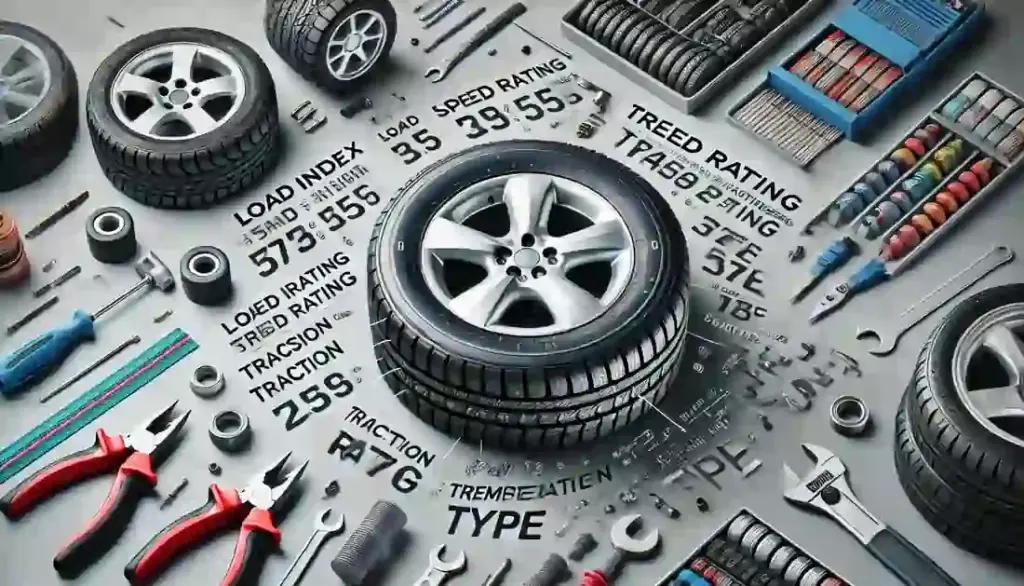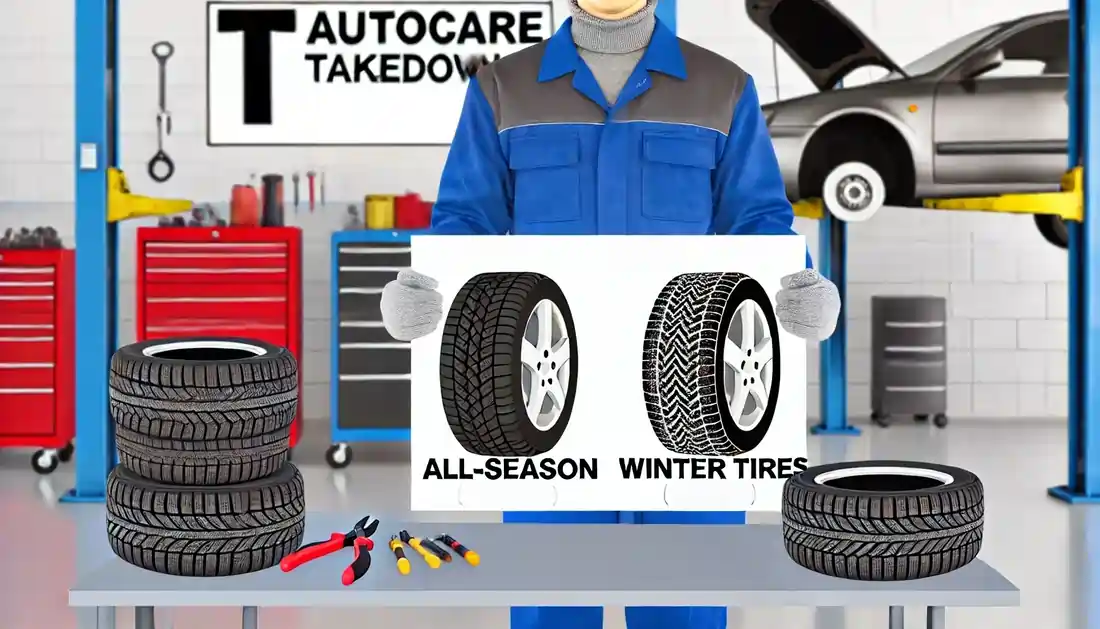Selecting the right tires for your vehicle is crucial for ensuring safety, performance, and longevity.
At T Autocare Takedown, we aim to help you understand tire ratings so you can make informed decisions.
Here’s a comprehensive guide on different tire ratings and what they mean.

Introduction
Tire ratings provide essential information about a tire’s capabilities, including load capacity, speed rating, traction, temperature resistance, and treadwear.
Understanding these ratings can help you choose the right tires for your vehicle and driving needs.
Types of Tire Ratings
Load Index and Load Capacity
The load index is a numerical code found on the tire’s sidewall indicating the maximum weight a tire can carry. For example, a load index of 94 means the tire can support 1,477 pounds. It’s essential to ensure your tires have a load index that meets or exceeds your vehicle’s requirements to handle weight safely.
Speed Ratings
Speed ratings indicate the maximum speed a tire can safely maintain. Ratings range from “L” (75 mph) to “Y” (186 mph), with “H” (130 mph) and “V” (149 mph) being common for passenger vehicles. Always choose a tire with a speed rating that matches or exceeds your vehicle’s top speed capabilities.
Treadwear Rating
The treadwear rating is part of the Uniform Tire Quality Grading (UTQG) system and indicates the expected lifespan of a tire. For example, a tire with a treadwear rating of 300 is expected to last three times longer than a tire rated 100. This rating helps you compare the durability of different tires.
Traction Rating
The traction rating measures a tire’s ability to stop on wet surfaces. Rated from AA (highest) to C (lowest), higher ratings indicate better traction and safety on wet roads. This is crucial for maintaining control in rainy conditions.
Temperature Rating
The temperature rating indicates a tire’s resistance to heat, which is vital for high-speed driving. Rated from A (highest) to C (lowest), higher ratings mean the tire can dissipate heat more effectively, reducing the risk of blowouts.
Tire Size and Construction
Tire size includes width, aspect ratio, and diameter. For example, a tire marked 205/55R16 is 205 mm wide, has a height that is 55% of its width, and fits a 16-inch wheel. The letter “R” indicates radial construction, which is standard for modern tires and offers better performance and durability.
Manufacturing Date Code
The manufacturing date code, typically a four-digit number, shows the week and year the tire was produced (e.g., “0115” means the tire was made in the first week of 2015). Knowing the age of your tires helps ensure they are not too old, as tires degrade over time.
Importance of Understanding Tire Ratings
Understanding these tire ratings helps you select the best tires for your vehicle, ensuring optimal performance, safety, and longevity. Whether you need tires that offer superior wet traction, higher speed capability, or longer tread life, these ratings provide the necessary information to make an informed choice.
Conclusion
Selecting the right tires involves understanding various tire ratings and their implications. At T Autocare Takedown, we are committed to providing you with the knowledge you need to maintain your vehicle’s safety and performance.
For expert guidance and comprehensive auto repair in Broken Arrow, our team can help you select the best options to ensure your car’s safety and performance.
By understanding tire ratings, you can ensure that your vehicle is equipped with the best tires for your needs. Trust T Autocare Takedown for all your auto repair and maintenance needs.
Contact Us:
- Address: 1501 W Detroit St, Broken Arrow, OK 74012
- Phone: (539) 367-3738












